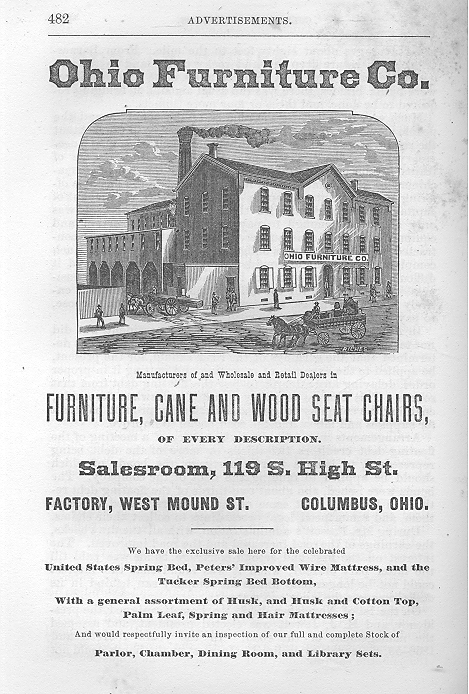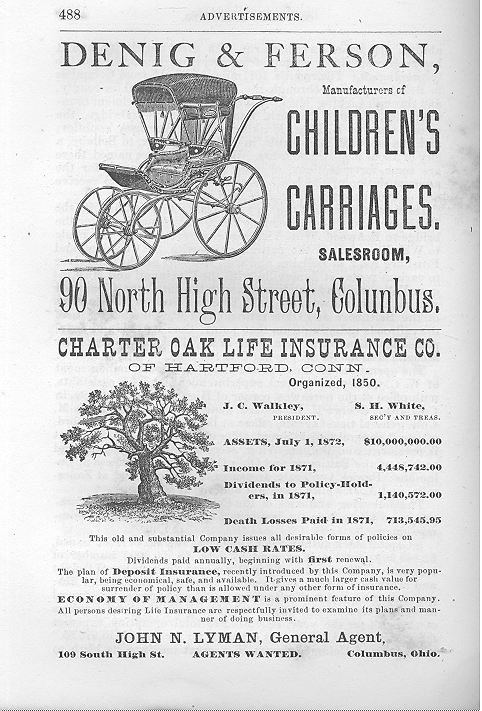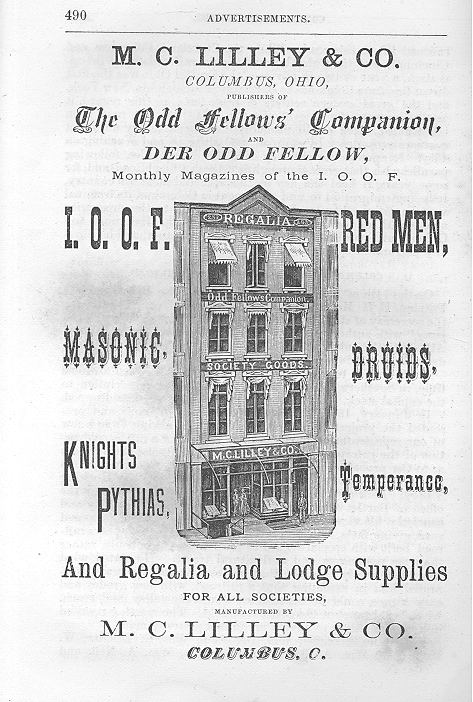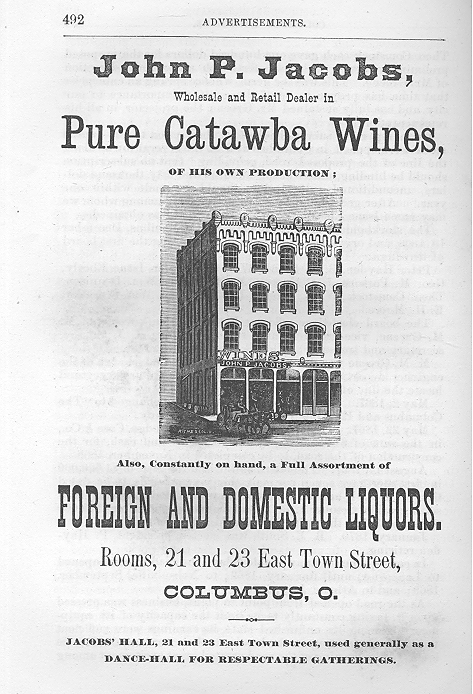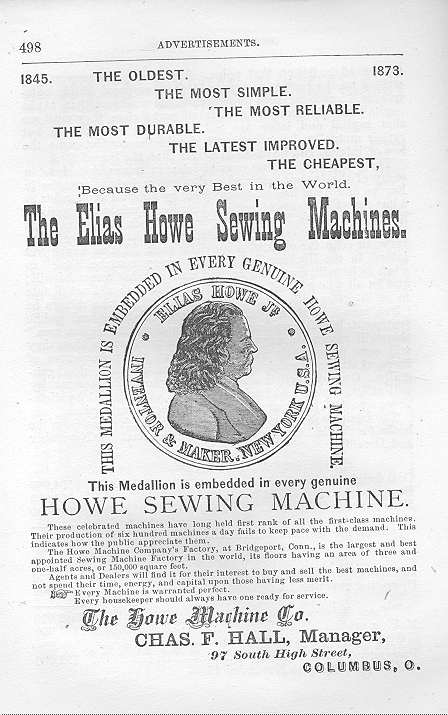|
MISCELLANEOUS SOCIETIES - 467 FRANKLIN COUNTY BAR ASSOCIATION.—At a meeting of the Franklin County Bar in January, I869, a committee was appointed to prepare and report a minimum fee-bill, The committee reported at a subsequent meeting, held on the 3d of February ensuing. The report was adopted, and Messrs. Otto Dresel, Geo. L. Converse, L. J. Critchfield, C. N. Olds, Llewellyn Baber, Wm. R. Rankin, and Thomas Sparrow were appointed a committee to prepare a constitution for the government of an organization to be known as the Franklin County Bar Association. This committee reported a constitution, which was adopted at a meeting held on the 20th of April, 1869. The constitution states the objects of the association are to promote harmony, good feeling, and a closer union among the members of the bar; to maintain professional honor and dignity; to encourage the highest attainments in legal knowledge, and to promote generally the professional interests of its members. One of the articles of the constitution requires the association, as soon as practicable, to provide a room, which shall be comfortably furnished and kept open during such hours as shall be fixed, and provided with such books, periodicals, etc., as may be purchased for that purpose; the judges of the court are to be invited to make such room their chambers, and the same is also to be used for the meetings and other purposes of the association. The first officers of the association were : Judge J. Wm. Baldwin, president; Judge H. B. Albery, vice-president; George K. Nash, secretary; Col. James Watson, treasurer; executive committee, Henry C. Noble, Otto Dresel, C. N. Olds; board of trustees, J. D. Burnett, Col. L. Baber, Morton E. Brasee, Col. J. T. Holmes, Gen. J. G. Mitchell. Soon after its adoption, the constitution was printed in a pamphlet, containing the names of fifty-three members of the association, practicing lawyers of this county. The association has a fund of $194.75 in its treasury. Its officers are: President, Henry C. Noble; vice-president, L. Baber; secretary, E. L. De Witt; treasurer, James Watson; examining committee, J. Wm. Baldwin, C. N. Olds, and Otto Dresel ; trustees, John D. Burnett, John G. Mitchell, E. L. Taylor, J. T. Holmes, and E. T. De Laney (expelled from the bar since his election to the office of trustee). COLUMBUS TURNVEREIN.—This association was incorporated March 11, 1867, with the following officers of the incorporation: Trustees, George Hessenaur, John Bickel, and Robert Clemen; clerk, John Alten. The object of the society, as expressed in its certificate of in-
MISCELLANEOUS SOCIETIES - 469 corporation, is to engage in gymnastic exercises, and the cultivation and training of body and mind. A memorable event in the history of the Columbus Turnverein was the Turnbezirk of the Ohio Valley district, held under its auspices, in this city, on the I8th, 19th, and 20th of August, I872. The city, on Saturday, the 18th, the first day of the reunion, was arrayed in holiday attire—banners, flags, flowers, and evergreens being intertwined and wreathed in beautiful festoons, or suffered to freely wave and float on the passing breeze. Turner Hall was especially decorated for the occasion. Amid festoons of evergreens, American and German flags, pictures, and shields bearing the coats of arms of the different States of Germany, ornamented the interior of the hall. There were delegations present from Indianapolis, Dayton, Cincinnati, Hamilton, Piqua, Louisville, and other places, numbering several hundreds. The hall was brilliantly illuminated on Saturday evening, and from it marched a torch-light procession of two or three hundred Turners, through several streets, headed by a band, each man carrying a Chinese lantern. This gathering being mainly for an exhibition of progress and proficiency in the exercises of the Turner organization, a meeting was held at the hall, on Sunday morning, in relation to the contest for prizes on the following day. This meeting was called to order by Charles F. Reis, speaker of the Columbus Turners, and an address of welcome was delivered by Henry Olnhauser, of this city. Committees were appointed to award the prizes in gymnastic and literary exercises. There were literary exercises in the City Park, on Sunday afternoon, and a concert at the City Hall in the evening. On Monday, there was a procession of Turners and other German societies of the city from Turner Hall to the City Park, where there was a grand social picnic, and where the contest for prizes in the gymnastic exercises took place. Diplomas and wreaths were awarded to the victors in these contests. Other and varied exercises rendered the occasion one of real and high enjoyment. Balls at Wenger's and Turner Halls crowned the programme. The present officers of the Columbus Turnverein are: President, Charles F. Reis; vice-president, A. Robsaman; treasurer, Conrad Born; teacher, C. Peppler; secretaries, E. Cramer, and C. Yohnson; trustees, F. Crum, F. Theobald, and C. H. Campen. BREWERS' ASSOCIATION.—The organization of brewers of this city, although it originally included non-residents of Columbus, is a branch of the Brewers' Union of the United States, which holds annual meetings in different cities. Its object is to guard and advance the general interests of the brewing fraternity. MISCELLANEOUS SOCIETIES - 471 The officers of the Brewers' Association of Columbus are: Conrad Born, Sen., president; Nicholaus Schlee, treasurer; Lewis P. Hoster, secretary. The association meets in Hessenauer's Hall, once every three months—on the first Monday in February, Ray, August, and November. ASSOCIATION OF THE 133D REGIMENT, O. V. I.— This organization, composed of the surviving members of the 133d regiment Ohio volunteer infantry, was formed on the 16th August, 1871. It has for its object the renewing of the associations formed during military service in the late war, and the remembrance of their fallen comrades. The association has a membership numbering 132, who meet together once a year, in a general reunion, at the county fair grounds. The next meeting of the society will take place on Wednesday, the 20th of August, 1873, which is the anniversary of the day on which the regiment was mustered out of service. The officers of the association at present are: Colonel William Ewing, president; Major C. P. Landon, vice-president; Lieutenant C. N. Bancroft and Captain E. W. Poe, secretaries; Sergeant A. Ritson, treasurer; executive committee, Joseph Robbins, Dr. L. S. Rafferty, George Wagner, H. C. Tipton, H. A. Guitner, John L. B. Wiswell, Edwin Harris, S. M. Sherman, — Leavitt, Henry Plimpton, and J. H. Fearn. FIRST GERMAN TARGET CLUB OF COLUMBUS.—Incorporated December 29, 1854. Object.--to promote and cultivate scientifically the art of target shooting. Capital stock $1,000, divided into shares of $5 each. First board of trustees under the incorporation: Chr. Siebert, V. Hettesheimer, George Kammaeher; clerk, Charles Klie. The club procured about three acres of ground east of the garden now called the Columbus Nursery, and about one mile and a half south of the State-house. The lot was handsomely laid off with graveled walks, and planted with choice flowers and shrubbery. The targets were placed against an embankment, whose construction cost $250. Annual target shooting-matches are held usually in September, at which of-hand and rest shooting are practiced, and prizes distributed. These matches are attended by the best shots from other Ohio cities. The present officers of the club are: Christian Siebert, president; Nicholaus Schlee, secretary; Ferdinand A. Lesquereux, treasurer; 1st shooting master, Charles Cullman; 2d shooting master, Ferdinand A. Lesquereux. 472 - ADVERTISEMENTS |


